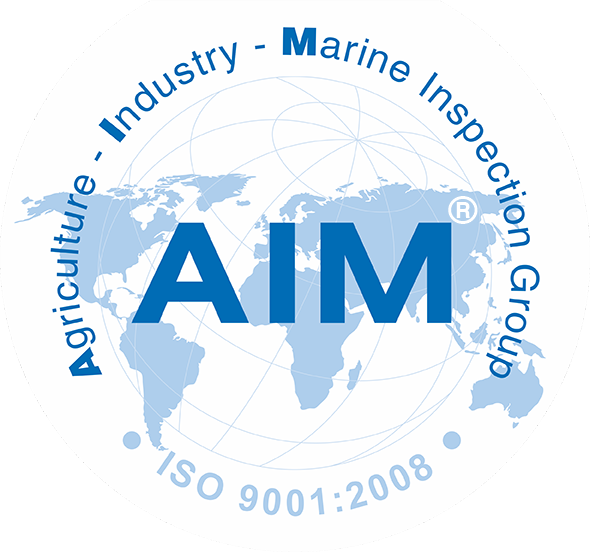Menu
- What we do
- Field
- Marine and Cargo Survey / Offshore Inspection Services
- A Ship surveying and inspection services
- PNI Correspondent and Surveyors of shipowners
- Marine warranty survey services
- Charterer surveyors
- Pre-loading survey / Loading inspection services
- Pre-purchase ship vessel inspection
- Tally clerk and cargo surveyors
- Marine Cargo Survey and Consultant
- Discharging Inspection Services
- Survey services for Insurance companies
- Safety supervision for shipping
- a New ship supervision at shipyard
- Ultrasonic Test services
- Vessel Condition Inspection Services
- Heavy lift control
- Marine services
- Heavy Lift Project Cargo Loading/ Unloading Supervision/ Survey
- Loading Masters
- Risk Analysis and Loss Prevention
- Ship collision inspection
- Ship Hull and Machinery Survey Surveyors
- Break / Bulk Cargoes Holds Condition Survey/Inspection
- Vehicle RoRo Ships Shipping Control Survey
- Sealing and Unsealing Services
- Loading and Discharging Supervision / inspection
- Tallying and Supervision Services
- Technical Inspection of Vessel and Equipments
- Pipes oil gas equipment inspection
- Cargo Visual Inspection services
- Towage approval survey
- Cargo Container Inspection Services
- Cargo Hatch Covers Test and Inspection
- Ship Hull Cleaning / Propeller Polishing
- Tank coating condition survey / coating condition inspection
- Bunker Survey Inspection
- Damage expertise surveyors
- Draft Surveys
- Damage Marine Cargo Surveyor
- Off-shore - Divers Services
- Container Inspection, QA/QC
- IMDG Cargo Inspection Certificate
- Dry Cargo Inspection Surveyor
- Tank inspection
- Quality Control Quantity Inspection Certification Services
- Load securing Inspection
- Hose Handling Inspection and Testing
- Vessels Barges Calibration
- Crane Test Inspection
- Classification/ Register of Vessel
- Marpol VI
- Cargo Line Testing
- Marine Ship Surveyors and Consultancy
- Port Capt.
- Damage Survey
- Claims Insurance Recoveries
- Marine cargo surveyor
- Cargo inspection services transportation at sea
- Expedite witness
- Agriculture Goods Control / Commodities Inspection Services
- Fruits quality inspectors and certification organization
- Inspection of agriculture commodity
- Rice Quality & Quantity Control Inspection
- Ship holds survey / hatch-covers inspection
- Sampling / Testing and Analysis
- Sampling
- Loading discharging handling surveillance
- Inspection Quality / Safety
- Food and Feed Safety Grains Inspection
- Inspection and escorts service
- Tallying Clerk Surveyor services
- Fumigation
- Identity Preservation Programme and Traceability Services
- Raw Cashew Nut Inspection/ Raw Cashew Nut Quality Control
- Fertilizers Testing and Inspection
- Industry Inspection Services
- Cement inspection tallying
- Inspection of investment projects
- Inspection of Construction - New Building
- Inspection / appraisal of project of construction
- Inspection / Certificate for cargo to meet with GOST
- Inspection of electrical system
- Vendor Inspection / Representative of Contractor, Investor
- Inspection, Certification of cargo to meet with ISIRI Mandatory Standards
- Laboratory / Mechanical Testing
- NDT - Conventional Radiography
- Inspection of Pressure Equipment
- Quality Control / Inspection Services
- Shop Inspection / Vendor Inspections
- Supply Chain Assess
- Mechanical engineer and expert
- Ultrasonic testing
- Vendors Surveillance
- Mechanical Inspectors
- Project Verification Services
- Audit / Certification
- Chartered Engineers Certification Inspection
- Others
- Automotive inspection
- Consumer Goods inspection / Foodstuff Products Inspection /Commodity Inspection Services
- Petroleum Oil / Gas / Chemicals Inspection Services
- Minerals Inspection Services
- Inspection Services for Government/Contractors
- Appraisal / Valuation
- International Trade Inspection Services
- Cargo Survey / Goods Inspection
- Certification Services
- Marine and Cargo Survey / Offshore Inspection Services
- Expert
- Activity / Action
- Outsourcing
- Audit
- Science
- Surveillance
- Underwater works
- Engineering Consultant
- Correspondent
- Control
- Advisory
- Monitoring
- Engineering
- Risk Management
- Tallying
- Quantity survey
- Superintendent
- Inspection
- Project Management
- Expediting
- Salvage
- Analysis
- Solution
- Consultancy
- Supervision
- Certification
- Appraisal & Valuation
- Verification
- Weight control
- Approval
- Testing
- Assurance
- The Inspection companies
- Third Party Inspection Company
- Investigation
- Witness
- Measurement
- Validation
- Registration@Classification
- Sampling
- Expertise
- Diving
- Loss Adjusting
- Loss Prevention
- Identify
- Survey
- Inspection services
- Quality control
- Field
- AIM Control
- Client
- Contact us
Field
Expert
Activity / Action
Home pagePage Not Found
Page Not Found
|


Expert
- Due diligence advisors
- Marine Salvagers and Wreck Removal
- Cargo Hydrocarbon Liquefaction Inspectors
- Pre-Purchase Ship Inspectors
- Appraisers
- Expeditors and supervisors
- Mechanical inspectors
- Escorts monitoring
- Marine Casualties Expert
- Marine Pollution Preventers and Solutions
- Off-Shore Surveyors
- Marine Warranty Surveyors
- P&I Correspondent
- Expert witness services
- Loss Adjusters
- Pre & Post Charter Surveyors / ISM, ISPS & MLC audit
- Claim Investigators
- Electrical inspectors
- Underwater Work Divers Services
- Cargo inspectors
- Loss Assessor Loss Adjuster
- Accident Incident Investigators
- Cargo samplers
- Cargo Surveyors
- Port Captain and Loading Master
- Underwriter Loss control / Claim prevention
- Loss Controller Claim Prevention Expert
- Industry Inspectors & Experts
- Fixed Object Damage Investigators
- Marine Cargo Expertise
- QA.QC
- Activities and roles marine surveyor
- Agriculture Inspectors & Surveyors
- Marine Independent Experts
- Hull & Machinery Expert and Surveyors
- Insurance surveyors / underwriter assessors
- Certification and Approval
- CE Captain Master Surveyors
- Tally-clerk
- Classification Inspectors
- Ship inspectors
- Auditors
- Engineering and Certification
- Cargo Damage Surveyors
- Quality inspector and Laboratory
- Third party inspection
- Vessel Collisions Surveyors and Investigators
- Handling and Suitability Consultant
- Maritime consultant and surveyors
- Expert and consultancy
About us
Copyright@1993-Present: AIM Control Inspection Group of Companies




